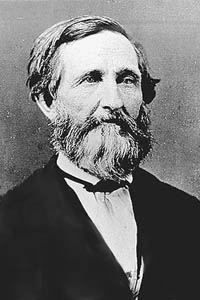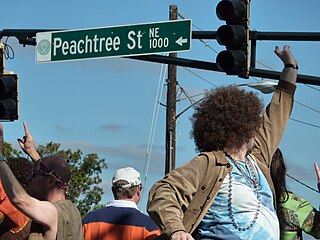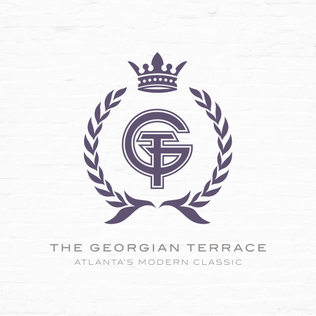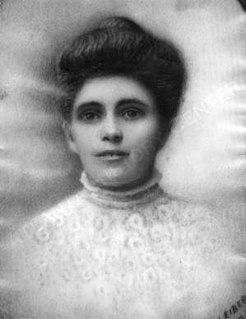
Gone with the Wind is a novel by American writer Margaret Mitchell, first published in 1936. The story is set in Clayton County and Atlanta, both in Georgia, during the American Civil War and Reconstruction Era. It depicts the struggles of young Scarlett O'Hara, the spoiled daughter of a well-to-do plantation owner, who must use every means at her disposal to claw her way out of poverty following Sherman's destructive "March to the Sea". This historical novel features a coming-of-age story, with the title taken from the poem “Non Sum Qualis eram Bonae Sub Regno Cynarae”, written by Ernest Dowson.

Margaret Munnerlyn Mitchell was an American novelist and journalist. Mitchell wrote only one novel, published during her lifetime, the American Civil War-era novel Gone with the Wind, for which she won the National Book Award for Most Distinguished Novel of 1936 and the Pulitzer Prize for Fiction in 1937. In recent years long after her death, a collection of Mitchell's girlhood writings and a novella she wrote as a teenager, titled Lost Laysen, have been published. A collection of newspaper articles written by Mitchell for The Atlanta Journal was republished in book form.

Crawford Williamson Long was an American surgeon and pharmacist best known for his first use of inhaled sulfuric ether as an anesthetic.

The history of Atlanta dates back to 1836, when Georgia decided to build a railroad to the U.S. Midwest and a location was chosen to be the line's terminus. The stake marking the founding of "Terminus" was driven into the ground in 1837. In 1839, homes and a store were built there and the settlement grew. Between 1845 and 1854, rail lines arrived from four different directions, and the rapidly growing town quickly became the rail hub for the entire Southern United States. During the American Civil War, Atlanta, as a distribution hub, became the target of a major Union campaign, and in 1864, Union William Sherman's troops set on fire and destroyed the city's assets and buildings, save churches and hospitals. After the war, the population grew rapidly, as did manufacturing, while the city retained its role as a rail hub. Coca-Cola was launched here in 1886 and grew into an Atlanta-based world empire. Electric streetcars arrived in 1889, and the city added new "streetcar suburbs".

Peachtree Street is one of several major streets running through the city of Atlanta. Beginning at Five Points in downtown Atlanta, it runs North through Midtown; a few blocks after entering into Buckhead, the name changes to Peachtree Road at Deering Road. Much of the city's historic and noteworthy architecture is located along the street, and it is often used for annual parades,, as well as one-time parades celebrating events such as the 100th anniversary of Coca-Cola in 1986 and the Atlanta Braves' 1995 World Series victory.

Buckhead is the uptown commercial and residential district of the city of Atlanta, Georgia, comprising approximately the northernmost fifth of the city. Buckhead is the third largest business district within the Atlanta city limits, behind Downtown and Midtown, a major commercial and financial center of the Southeast.

The Margaret Mitchell House is a historic house museum located in Atlanta, Georgia. The structure was the home of author Margaret Mitchell in the early 20th century. It is located in Midtown, at 979 Crescent Avenue. Constructed by Cornelius J. Sheehan as a single-family residence in a then-fashionable section of residential Peachtree Street, the building's original address was 806 Peachtree Street. The house was known as the Crescent Apartments when Mitchell and her husband lived in Apt. 1 on the ground floor from 1925 to 1932. While living there, Mitchell wrote the bulk of her Pulitzer Prize-winning 1936 novel, Gone with the Wind.

Oakland Cemetery is one of the largest cemetery green spaces, in Atlanta, Georgia, U.S. Founded as Atlanta Cemetery in 1850 on six acres (2.4 hectares) of land southeast of the city, it was renamed in 1872 to reflect the large number of oak and magnolia trees growing in the area. By that time, the city had grown and the cemetery had enlarged correspondingly to the current 48 acres (190,000 m2). Since then, Atlanta has continued to expand so that the cemetery is now located in the center of the city. Oakland is an excellent example of a Victorian-style cemetery, and reflects the "garden cemetery" movement started and exemplified by Mount Auburn Cemetery in Massachusetts.

Joel Hurt (1850–1926) was an American businessman. He was the president of Trust Company of Georgia, and a developer in Atlanta. He was one of the many founders of SunTrust Bank.

William Yates Atkinson, was the 55th Governor of Georgia from 1894 to 1898.

Joseph Neel Reid, also referred to as Neel Reid, was a prominent architect in Atlanta, Georgia, in the early 20th century as a partner in his firm Hentz, Reid and Adler.

Alonzo Franklin Herndon was an African-American entrepreneur and businessman in Atlanta, Georgia. Born into slavery, he became one of the first African American millionaires in the United States, first achieving success by owning and operating three large barber shops in the city that served prominent white men. In 1905 he became the founder and president of what he built to be one of the United States' most well-known and successful African-American businesses, the Atlanta Family Life Insurance Company.

The Georgian Terrace Hotel in Midtown Atlanta, part of the Fox Theatre Historic District, was designed by architect William Lee Stoddart in a Beaux-Arts style that was intended to evoke the architecture of Paris. Construction commenced on July 21, 1910, and ended on September 8, 1911, and the hotel opened on October 2, 1911. The George C. Fuller Construction Company was contractor, and the developer was Joseph F. Gatins, Jr.

The Rufus M. Rose House is a late Victorian, Queen Anne style house located in the SoNo district of Atlanta, Georgia. Occupying a narrow lot on Peachtree Street, one and half blocks south of North Avenue, the house was built in 1901 for Dr. Rufus Mathewson Rose. The architect was Emil Charles Seiz (1873-1940), who designed many residential and commercial structures in the city, including the 1924 Massellton Apartments on Ponce de Leon Avenue.
Joseph Reynolds Mitchell was an American heir and philanthropist; one of the two nephews of Margaret Mitchell, author of Gone with the Wind; and the last family member to control the Mitchell Estate.

One Georgia Center is a skyscraper in SoNo, Atlanta, at the intersection of West Peachtree Street and North Avenue. Completed in 1968, the 24-story building is notable for its Georgia marble exterior.

St. Luke's Episcopal Church is an Episcopal church in Atlanta, Georgia. The parish was founded in 1864, with the current building on Peachtree Street constructed in 1906.
Annie Elizabeth Fitzgerald Stephens was an American landowner, businesswoman, and political activist. She was born to a prominent planting family in Clayton County, Georgia and grew up on the family plantation, Rural Home. The daughter of an Irish immigrant, she was a devout Catholic. Stephens was involved in real estate endeavors in Atlanta and sued the federal government after General William Tecumseh Sherman's Siege of Atlanta, during the American Civil War, damaged some of her properties. Some historians, literary critics, and film critics, including Molly Haskell, consider her to be the inspiration behind the fictional character Scarlett O'Hara, from Stephen's granddaughter, Margaret Mitchell,'s novel Gone With the Wind.

Mary Isabel "Maybelle" Stephens Mitchell was an American suffragist, clubwoman, and activist. Born into a prestigious planting family of Irish Catholic background, she was educated at the Villa Maria Convent in Quebec and the Atlanta Female Seminary in Georgia. A social and political activist, Mitchell was a leader in the women's suffrage movement in Georgia, protesting against state laws and meeting with local politicians to advocate for the rights of women, and was a member of the Atlanta Woman's Club. In 1915, she served as the president of the Atlanta Women's Suffrage League and, later, co-founded the League of Women Voters in Georgia. Mitchell helped establish the Catholic Layman's Association of Georgia, fighting against Anti-Catholicism in the United States. She was the mother of author and journalist Margaret Mitchell, whose character Ellen Robillard O'Hara from Gone With the Wind may have been based on Mitchell.

















